
How to Use SparkFun ESP32 LoRa_1 Channel Gateway: Examples, Pinouts, and Specs
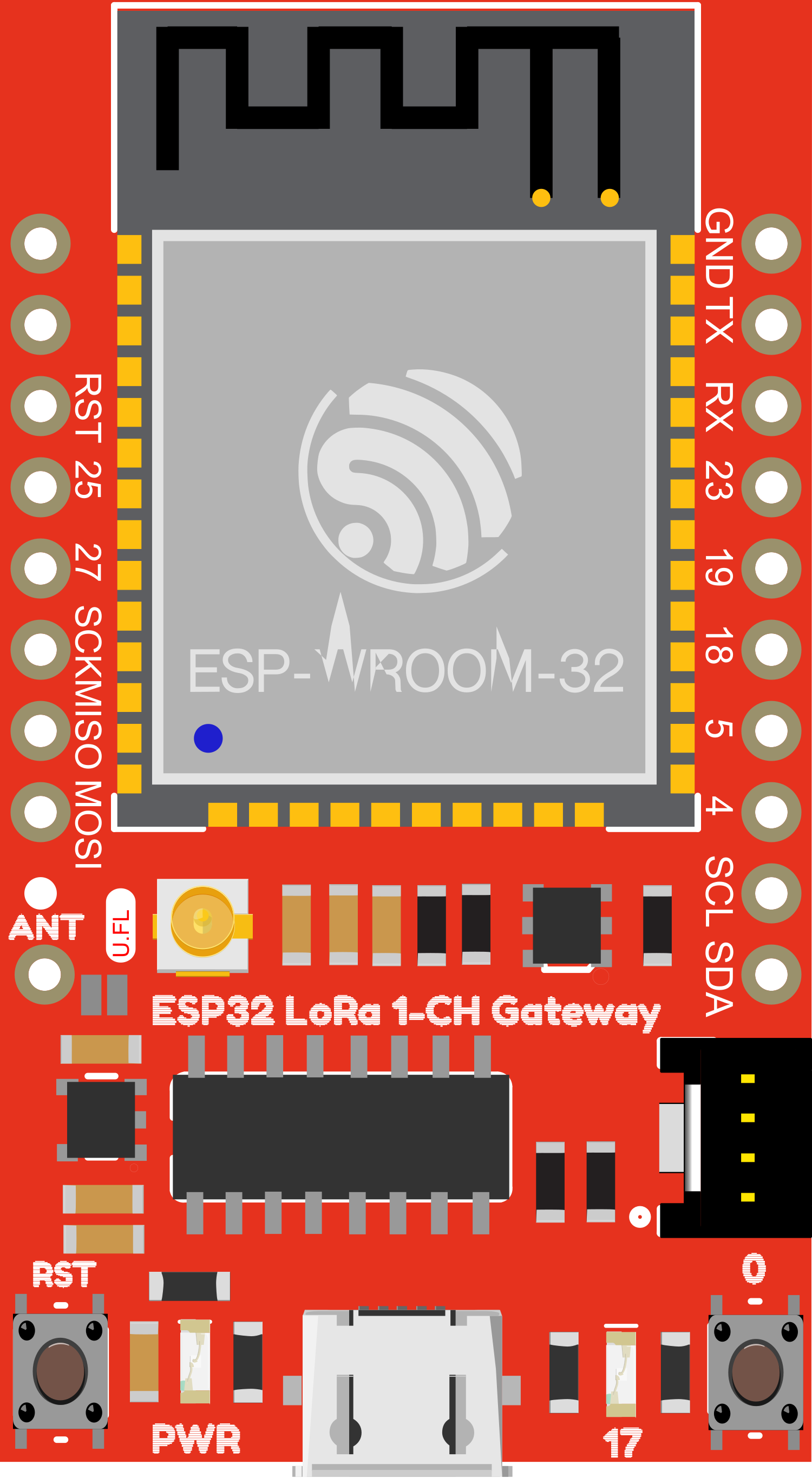
 Design with SparkFun ESP32 LoRa_1 Channel Gateway in Cirkit Designer
Design with SparkFun ESP32 LoRa_1 Channel Gateway in Cirkit DesignerIntroduction
The SparkFun ESP32 LoRa 1-Channel Gateway is a versatile and powerful electronic component that enables communication between an ESP32 microcontroller and LoRa (Long Range) devices. This gateway is designed to facilitate the creation of LoRa-based wireless networks, which are ideal for IoT (Internet of Things) applications due to their long-range and low-power consumption capabilities. Common applications include remote sensor networks, home automation, and other scenarios where wireless communication over long distances is required.
Explore Projects Built with SparkFun ESP32 LoRa_1 Channel Gateway
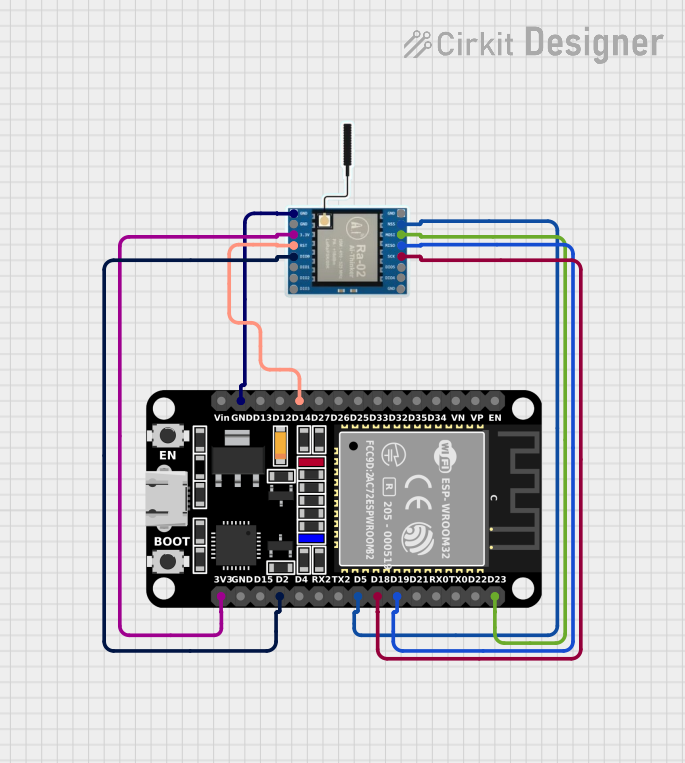
 Open Project in Cirkit Designer
Open Project in Cirkit Designer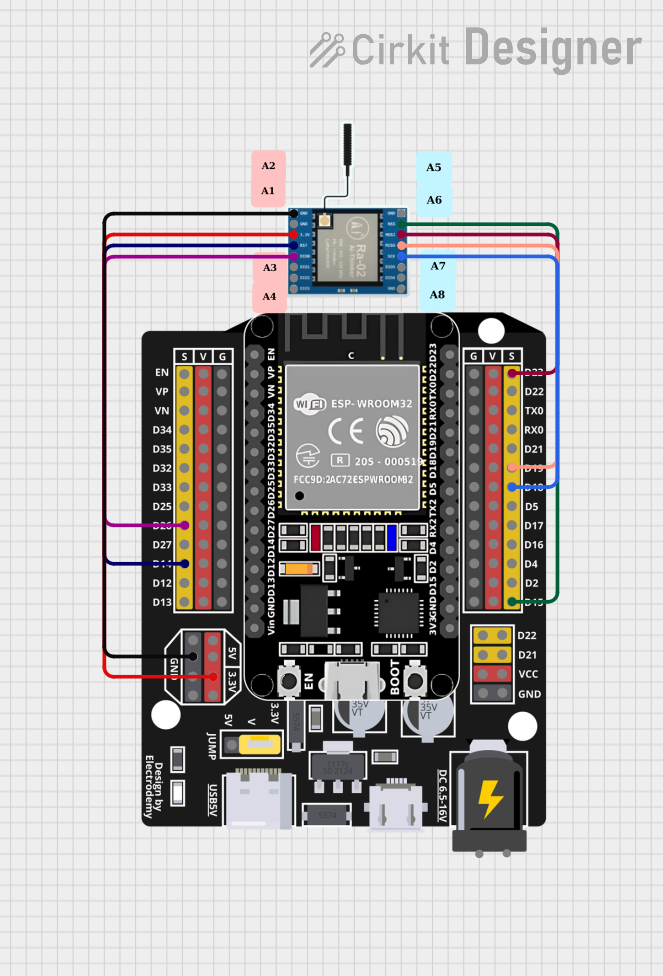
 Open Project in Cirkit Designer
Open Project in Cirkit Designer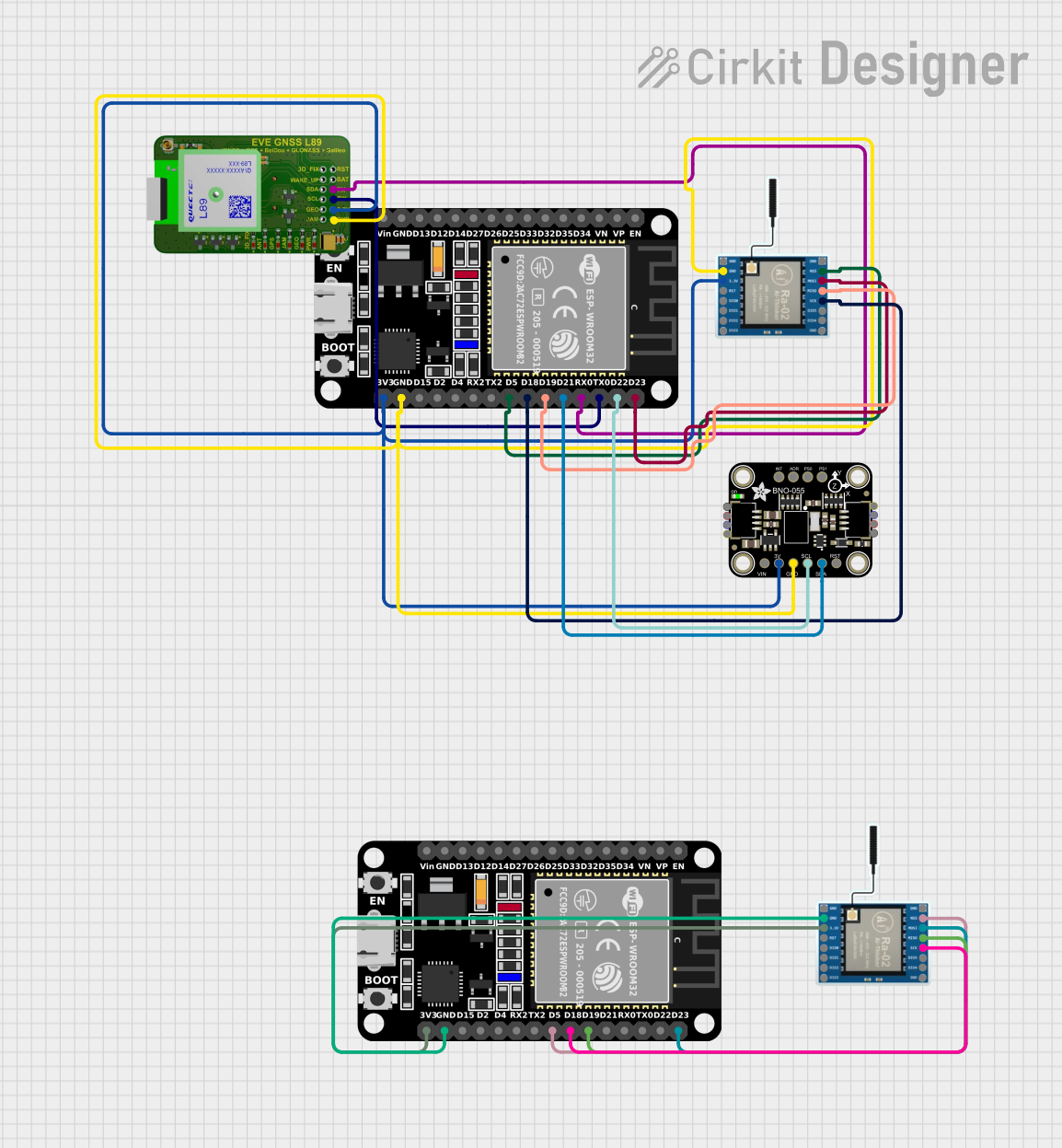
 Open Project in Cirkit Designer
Open Project in Cirkit Designer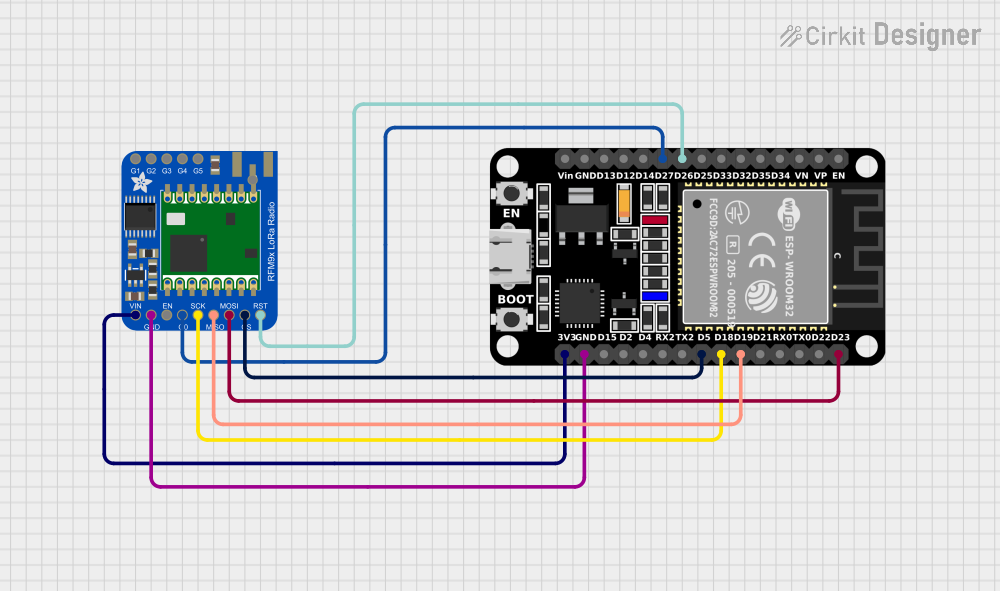
 Open Project in Cirkit Designer
Open Project in Cirkit DesignerExplore Projects Built with SparkFun ESP32 LoRa_1 Channel Gateway

 Open Project in Cirkit Designer
Open Project in Cirkit Designer
 Open Project in Cirkit Designer
Open Project in Cirkit Designer
 Open Project in Cirkit Designer
Open Project in Cirkit Designer
 Open Project in Cirkit Designer
Open Project in Cirkit DesignerTechnical Specifications
Key Technical Details
- Operating Voltage: 3.3V
- Frequency Range: 868/915 MHz (region-specific)
- LoRa Modulation: LoRa and FSK
- Output Power: Up to +20 dBm
- Sensitivity: Down to -139 dBm @ SF12, 125 kHz
- Host Communication: UART, SPI
- GPIOs: Available for custom applications
- Antenna Connector: U.FL and SMA options
Pin Configuration and Descriptions
| Pin Number | Pin Name | Description |
|---|---|---|
| 1 | GND | Ground connection |
| 2 | 3V3 | 3.3V power supply input |
| 3 | TX | UART Transmit |
| 4 | RX | UART Receive |
| 5 | RST | Reset pin (active low) |
| 6 | IO0 | General-purpose input/output |
| 7 | IO1 | General-purpose input/output |
| 8 | SCK | SPI Clock |
| 9 | MISO | SPI Master In Slave Out |
| 10 | MOSI | SPI Master Out Slave In |
| 11 | SS | SPI Slave Select |
Usage Instructions
How to Use the Component in a Circuit
- Power Supply: Connect the 3V3 pin to a 3.3V power source and the GND pin to the ground.
- Antenna: Attach an appropriate antenna to the U.FL or SMA connector for the frequency band of operation.
- Microcontroller Connection: Use UART or SPI to connect the ESP32 LoRa Gateway to your microcontroller.
- Programming: Program the ESP32 to handle LoRa communication using the appropriate libraries.
Important Considerations and Best Practices
- Ensure that the power supply is stable and clean to avoid damaging the component.
- Use a proper antenna for the specific frequency band to maximize range and comply with regulations.
- When using UART, ensure that the baud rates of the ESP32 and the LoRa Gateway match.
- For SPI communication, ensure that the SPI mode and clock speeds are correctly configured.
- Follow local regulations regarding the transmission power and frequency usage for LoRa devices.
Troubleshooting and FAQs
Common Issues
- No Communication: Verify wiring, ensure that the power supply is correct, and check that the UART/SPI settings match.
- Low Range: Check the antenna connection and orientation, and ensure there are no obstructions in the line of sight.
- Unexpected Resets: Ensure that the RST pin is not being inadvertently triggered.
Solutions and Tips for Troubleshooting
- Double-check all connections and solder joints for reliability.
- Use a logic analyzer or oscilloscope to verify communication signals.
- Test with a known-good LoRa device to rule out issues with the gateway.
FAQs
Q: Can the ESP32 LoRa Gateway be used with Arduino? A: Yes, it can be interfaced with an Arduino board that supports 3.3V logic levels.
Q: What is the maximum range I can achieve with this gateway? A: The range depends on several factors, including antenna type, environment, and settings, but it can typically reach several kilometers in open areas.
Q: Is this gateway compatible with all LoRa devices? A: It should be compatible with most LoRa devices that operate on the same frequency and follow the LoRaWAN protocol.
Example Code for Arduino UNO
Below is an example code snippet for connecting the SparkFun ESP32 LoRa 1-Channel Gateway to an Arduino UNO. This example assumes you are using a software serial port for communication.
#include <SoftwareSerial.h>
// Define the software serial TX and RX pins
#define RX_PIN 10
#define TX_PIN 11
// Create a software serial object
SoftwareSerial mySerial(RX_PIN, TX_PIN);
void setup() {
// Start the hardware serial communication
Serial.begin(9600);
// Start the software serial communication
mySerial.begin(9600);
Serial.println("LoRa Gateway Test");
}
void loop() {
// Check if data is available to read from the LoRa gateway
if (mySerial.available()) {
// Read the data and print it to the hardware serial port
Serial.write(mySerial.read());
}
// Check if data is available to read from the hardware serial port
if (Serial.available()) {
// Read the data and send it to the LoRa gateway
mySerial.write(Serial.read());
}
}
Remember to install the SoftwareSerial library if you haven't already, and ensure that the LoRa gateway is correctly configured to communicate at the same baud rate as the software serial port.